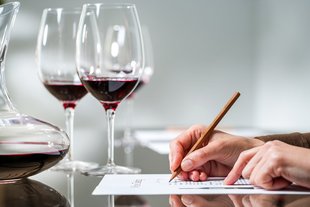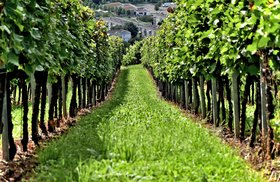How to Taste Wine Like a Pro (The 5 S’s of Wine Tasting)
Ever wondered how to taste wine like a pro since it’s widely held as an enigmatic and almost intimidating ritual?
How do you describe your drink as “acidic”, “angular”, “tannic” or “oaky” with just a sip - like a wine expert?
Well, learning how to do it right is easier than you think.
Read on to discover what wine tasting is and the 5 S’ of tasting. And if you want to practice your tasting skills, we have some helpful tips on how to plan a wine tasting party, and cool wine tasting events you can attend. Additionally, we’ll reveal an easy way to build a wine collection to show off at your next wine tasting event!
Further reading
- Want to get started with wine investing? Get to know the basics of Investing in Fine Wine.
- Or perhaps you wish to get some of the finest bottles of Pinot Noir, Carignan and Carmenere for your next big gathering?
What is Wine Tasting?

Wine tasting is all about examining the wine with your senses of sight, smell, taste, and touch and evaluating its aroma, texture, and flavor notes.
Wine tasting is as old as winemaking. However, the term “wine tasting” was first used in the early 1500s. The methodology of tasting was formalized by scientists like Carl Linnaeus in the 1700s.
Today, a master wine taster would use sophisticated terms to describe the complex flavors and aromas of wine, which can sound pretty overwhelming.
You could too. You just have to follow a set of steps and practice it whenever you get a chance, to become a super-experienced taster. With time you’ll develop a more sensitive palate and can easily detect the many mesmerizing nuances of your favorite wines!
Here is a practical step-by-step guide to wine tasting.
How to Taste Wine - The 5 S’s of Wine Tasting
If you’re just getting started with wine tasting, the 5 S’s are the easiest way to understand how to taste wine.
1. “See” the wine
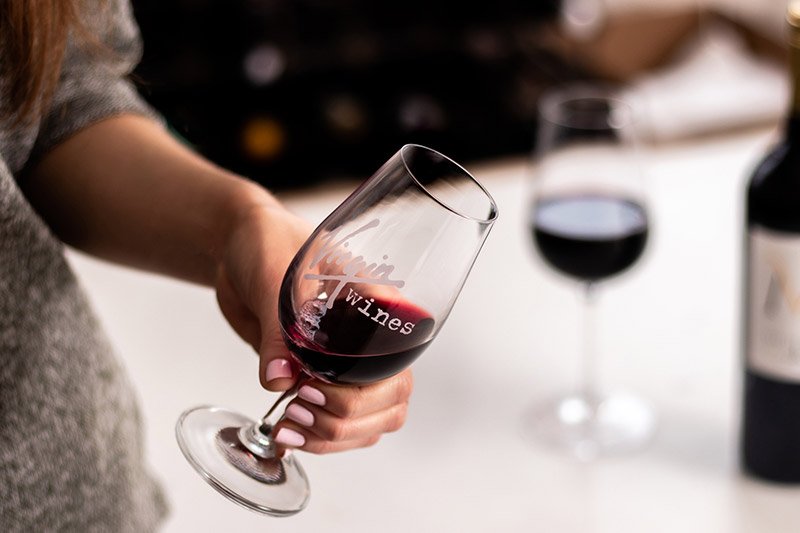
The first step of your exciting wine tasting experience is to evaluate the wine's appearance and color. To ensure you have a clear sight of the wine in your glass, make sure there’s good lighting. Preferably, take a look at your wine glass against a white background, so there’s no color distortion.
Here’s what you should do when examining the wine color:
- Look down into the glass: This allows you to see the depth of color. With some experience, you’ll be able to recognize the grape variety by the wine color intensity. For example, Cabernet Sauvignon has a deep ruby color while Syrah has a distinct inky purple color.
- Look through the side of the glass: Hold the glass against a light source to get a side view of it. You’ll be able to see whether the liquid inside the wine glass is clear or not. Having a clear liquid is always a good sign.
A cloudy liquid might indicate the presence of sediment. Even though sediments are harmless, they might affect the wine’s taste.
- Tilt the wine glass: That’s a great way to see the wine color’s different hues. They are a good indicator of the wine’s age and weight.
For example, when it comes to red wine, a deep purple color indicates a full-bodied young wine, while a pale red color shows a lighter wine.
The color can also indicate the wine’s age. If the wine has orange or garnet hues on the edges, this indicates an older vintage. If you’re tasting a white wine, the older vintages will have a warm golden or copper color after a few years of age in the cellar, while the young wines will be pale yellow.
2. “Swirl” the wine
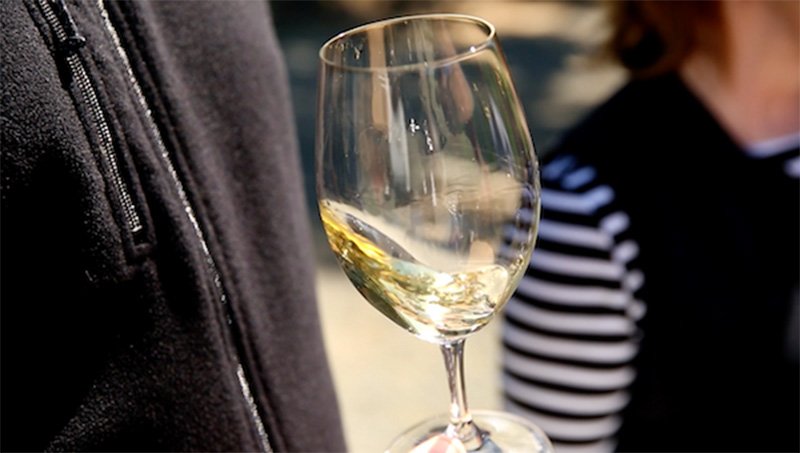
Swirling is an important step of the wine tasting process that is often skipped. To swirl your wine without worrying about spilling it, just place the base of the glass on the table and move the stem in circular motions.
Swirling your wine for about 5-10 seconds allows you to:
- Understand the wine viscosity: By swirling your wine glass, you can observe the so-called legs or droplets that form on the side of the glass. Wines with more pronounced legs have higher viscosity which indicates higher alcohol content and residual sugar levels.
- Aerate the wine: Swirling the wine is an important step prior to smelling your wine. That’s because swirling allows for faster alcohol evaporation and wine oxidation, both of which bring out the wine’s layered (hidden) aromas to the surface.
3. “Smell” the wine
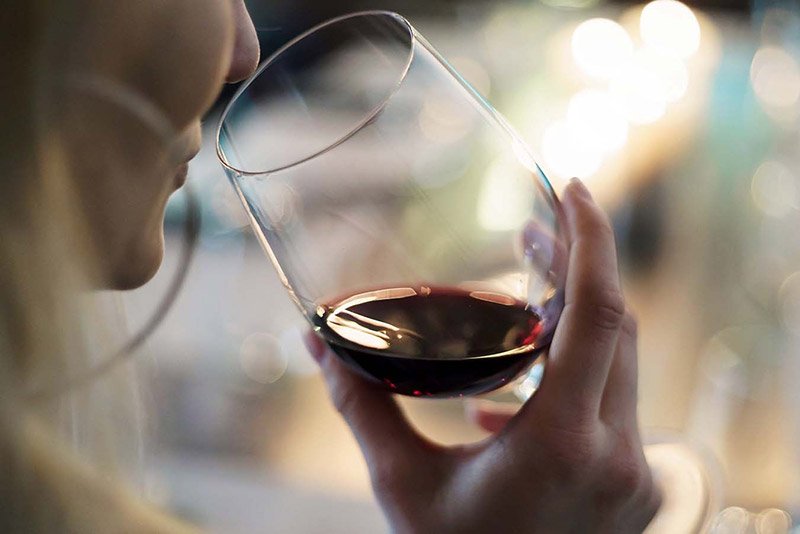
Once you’ve swirled your wine, it’s time to check out its vast array of aromas.
First, hover your nose above the glass and take a few quick sniffs. Then get closer to the glass and inhale deeper.
To detect more of the wine's aroma layers, keep your mouth slightly opened and try to inhale them through the nose and exhale through the mouth. And take a short break if you’re overwhelmed by the wine smell.
Also, keep in mind that each wine taster would have a different sense of smell. So, it’s completely normal if you don’t detect the same smells as some other wine taster.
Here’s a breakdown of the main aroma groups you should look out for (some would be more dominant than the others):
- Primary aromas: These are the fruity aromas of the wine. They come from the grape variety and the specific terroir the vines were grown in. Red wine usually has fresh fruit aromas of red fruit and black fruit, while white wine has dominant citrusy or tropical fruit aromas.
Other primary aromas include floral or herbal scents.
Some wine styles have a more specific smell - for example, Sauvignon Blanc has a distinct grassy smell, while Riesling wine’s aroma has a petroleum scent.
- Secondary aromas: The secondary aromas are a result of the fermentation and malolactic fermentation processes. They include specific yeast, mushroom, and earth smells that accompany the primary fruit aromas.
On the other hand, some dessert wines might have subtle honey aromas since the grapes would’ve been affected by noble rot.
- Tertiary aromas: These are more subtle scents that complete the aroma bouquet. Tertiary aromas develop during the wine aging process. For example, a wine aged in an oak barrel develops distinct toasty, nutty, or vanilla aromas.
Besides that, you should be able to recognize the scents of any possible wine flaws.
Watch out for these:
- A musty or moldy smell: This usually indicates a “corked wine” or a wine contaminated by cork taint (due to musty aroma compounds.) Such wines are not dangerous to drink, but they have an unpleasant taste.
- A burnt matches smell: This smell indicates the presence of sulphur dioxide during bottling and usually disappears after a short period of aeration.
- A nail polish or vinegar smell: Indicates volatile acidity in wine (an unpleasantly acidic wine.)
- A yeasty smell: This is a distinct smell caused by the Brettanomyces yeast. This yeast brings a hint of earthy scents to the wine in small amounts, but it can become unpleasant if it overpowers the nose.
4. “Sip” the wine
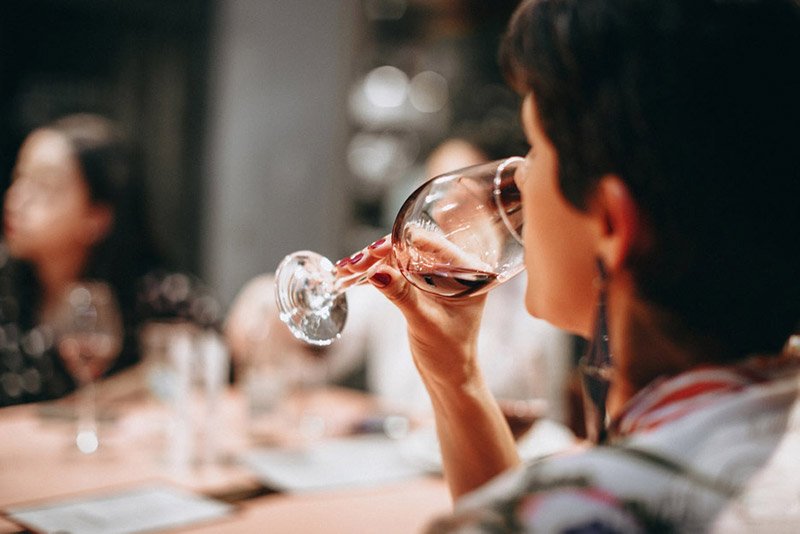
Now that you’ve already examined the color and aromas of the wine, it is finally time to taste it!
Take a sip of wine and swirl it gently in your mouth. This way, all your taste buds get coated with the liquid. To get even more in-depth flavor, inhale a bit of air through your mouth after taking a small sip of the wine.
The flavor should be a natural continuation of the aromas you identified in the previous step. Young wines are more intense with robust tasting note layers and could linger for longer on your palate.
However, sipping the wine reveals a whole new array of sensations too.
- Acidity: The wine’s acidity gives you clues on whether the grape vines were grown in a cold or hot climate and the wine’s aging potential. Less acidic wines have a smoother mouthfeel.
- Sweetness: This is one of the first sensations on your tongue. A wine’s residual sugar levels determine the sweetness levels and can be anywhere between 0 g/L (dry wine) to 220 g/L (sweet wine.) In some dry wines like Pinot Grigio, you can also detect a hint of saltiness.
- Alcohol: Wine alcohol content can vary from 5% ABV to 21% ABV. A dry wine would usually have a higher alcohol content, resulting in a warm sensation in your mouth.
This should be balanced by the wine’s texture, acidity, and tannin levels. A sweet wine, on the other hand, would have low alcohol content.
- Tannins: Tannins are primarily present in red wine. Highly tannic wine would have an astringent taste and dry sensation in your mouth.
Wines aged in oak barrel vessels usually have softer and rounder tannin levels. Young wine would have harsher tannin levels, while older wines have softer and rounder tannin mouthfeel.
- Texture: The wine could also be full-bodied or with a lighter texture. A heavy wine with a high ABV would have a fuller body, while wines with a low ABV will be lighter.
To understand the texture of the wine you’re tasting, just swirl it gently in your mouth and try to understand how it feels. Is it a syrupy and heavy wine or a light and fruity one?
5. “Savor” the wine

After evaluating the initial sensations and flavors of the wine, it’s time to dive into its aftertaste.
After the tasting wine stage, notice these:
- Does the flavour linger in your mouth, and for how long?
- What are the main aftertaste notes?
- Was there something unique about the wine that impressed you?
- Is the aftertaste balanced and pleasant?
- Was it a good wine? Would you recommend it to someone else?
You can take notes on the key flavour and tasting note hints, aromas, and sensations you’ve experienced during the wine tasting. This way, you’ll understand whether you liked the wine or not, and will be able to make an overall judgement.
Now:
If you want to practice your newly acquired tasting skills, there are two things you can do - hold private wine tasting events in your home, and attend wine tasting events!
For the first, here’s what you should keep in mind:
Tips to Remember Before You Plan A Wine Tasting Party
If you’re organizing a wine tasting event, consider the following factors:
1. Set up a Proper Environment
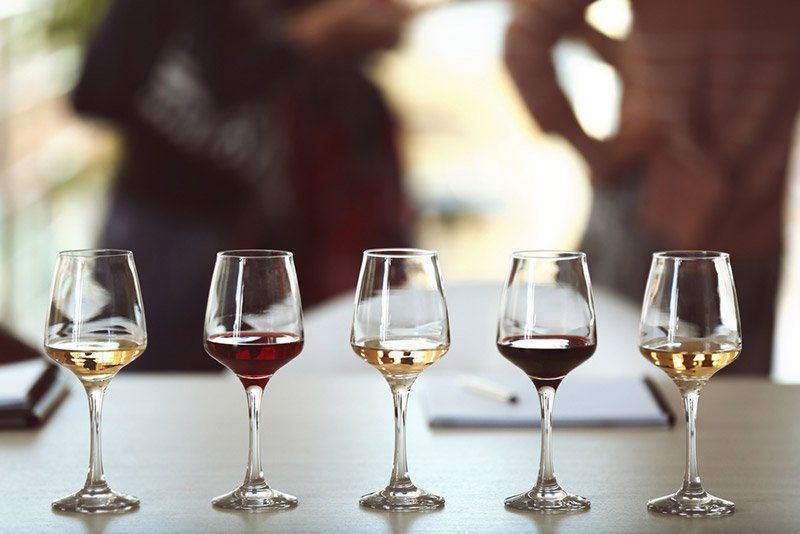
- A quiet environment will help you and your guests concentrate on the wine tasting. Avoid noises and odors like perfume or cigarette smoke that could affect the wine tasting experience.
- If you’re tasting different wine varietals, find out whether they need prior decanting and, if yes, for how long.
- Prepare water, snacks, and some fruit that’ll cleanse the palate before moving on to a different wine.
2. Choose the Right Glassware
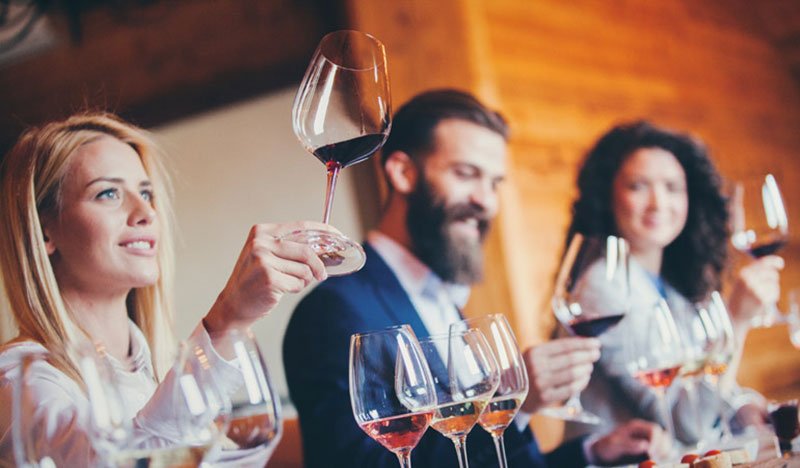
Having good wine glasses can only improve your wine tasting experience.
- Clear wine glasses: They will allow you to observe the wine’s color and different hues easily.
- Wine glasses with stems: The wine stays cool for longer in them.
- Wine glasses with a wider bottom and narrower top: When the wine gets a bigger “breathing” area, the wine's flavor profile unravels gently while the aroma is retained in the glass.
- Bigger wine glasses: The bigger the bowl, the safer it is to swirl your wine without spilling.
3. Serve at the Right Temperature
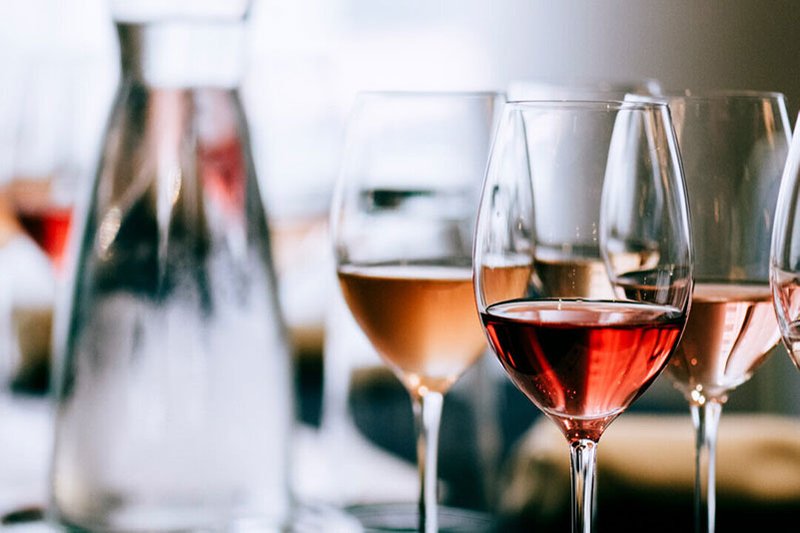
At the right serving temperature, the wine has an enhanced flavor profile. Here are the perfect serving temperatures for the different wine styles
Wine Type: Serving Temperature
- Dessert Wines: 6-10 °C Ex. (Sauternes, Ice Wine)
- Sparkling Wine: 6-10 °C Ex. (Champagne)
- Light-bodied White Wine: 8–12 °C Ex. (Sauvignon Blanc, Pinot Grigio)
- Full-bodied White Wine: 12–16 °C (Ex. Chardonnay, Viognier)
- Light-bodied Red Wine: 10–12 °C (Ex. Beaujolais,Pinot Noir)
- Full-bodied Red Wine: 15–18 °C (Ex. Zinfandel, Syrah, Cabernet Sauvignon)
Attending Wine Tasting Events

The second way to become a better wine taster is to attend more wine tasting events.
The more wine tasting events you attend, the better you’ll get at recognizing the vast array of wine flavors and aromas. And it's the best place to get wine tasting tips!
Wine tasting events can be fun. You can tour a famous wine country and taste the local wines of renowned vineyard and winery sites. Or you could go to private tasting parties where you get to try some award winning wines, network with other wine drinkers and enthusiasts, and understand how differently they perceive a wine.
Types of Wine Tasting Events You Can Attend

A wine lover can attend various wine tasting events organized by wineries, wine bars, and wine tasting tour guides to train and refine their palate.
Here are some fun wine tasting event and wine tour ideas:
- Blind wine tastings: During a blind tasting, you don’t get to see the wine label or know the wine’s origin, grapes, price, and reputation. Tasting wine like this removes all the bias you might have for it and helps you understand how much you know about the wine.
- Vertical and horizontal wine tastings: In a vertical tasting, you get to try different vintages of the same wine.
Horizontal tastings are a fun wine tasting experience - they give you the chance to try different wines from the same vintage, emphasizing the difference between the winemaker styles and the wineries.
- Tasting flights: This is a fun way to taste wine from different wine regions (e.g., Napa, Temecula Valley, California, or Bordeaux) and understand the differences between them.
Each glass of wine would come with a small card that provides details (the winery, wine region, grape variety, terroir, winemaker signature style) about the wine.
- Winery tastings: If you’re touring a wine country or a specific wine region, you can book a private tasting at the tasting room of a local winery.
You can also go on a group winery tour which might come with a complimentary wine tasting or a tasting for an additional tasting fee. This way, you get to learn in-depth about a specific winery and its winemaking style.
- Virtual tasting events: Some vineyards and wine educator connoisseurs also host awesome virtual wine tasting events. A virtual tasting could be a fun experience.
Usually, the virtual wine tasting organizer would ship the wine bottle cases from the winery or the vineyard beforehand, so you’re ready when the virtual wine tour starts.
Now, if you want to organize your own wine tasting event, you should start by building an enviable wine list!
And, the easiest way to invest in fine wine for your next big wine tasting party or to start a collection of investment-grade wine is through Vinovest.
But how does it work?
Add Some of the Best Wines to Your Collection Through Vinovest

Vinovest is an AI-based wine investment platform that allows you to buy and sell high quality wine bottles from all over the world. You can buy wines from Napa Valley, St. Helena, and Temecula in California to Rhone in France or even exotic wineries like Rolling Hills in South Africa.
So, what happens when you sign up and become a wine club member?
Vinovest also:
- Gives you access to award winning wines at the best possible prices.
- Stores your wine cases in bonded warehouses. This way, you save up on building a costly wine cellar at your house.
- Traces the provenance of every bottle of wine you buy and ensures its authenticity.
- Gives you access to an extended network of limited wine releases, private vineyard sales, and virtual wine tasting events.
- Charges minimal fees of only 2.5%, which drops to 1.9% for portfolios of over $50,000. The annual fee covers buying, selling, storing, insurance, fraud detection, and portfolio management.
- Vinovest’s master sommelier experts and data scientists curate your wine portfolio and make sure that each bottle in your portfolio suits your investment style.
- Vinovest will deliver your wine bottle cases anywhere you want - to your doorstep, a buyer, or even as a gift to your wine drinkers friends.
Build Your Own Collection and Master The Art of Wine Tasting

Wine tasting is a great way to dive deeper into the world of wine and understand the different nuances between specific wine styles.
To get over the initial confusion with all the technical terms and the many different flavor characteristics, just get started with the 5 S’s process, and the rest will follow.
If you’re a wine lover looking to start your own wine collection for your next wine tasting event, just use Vinovest’s help.
Sign up today and start building your fine wine collection
